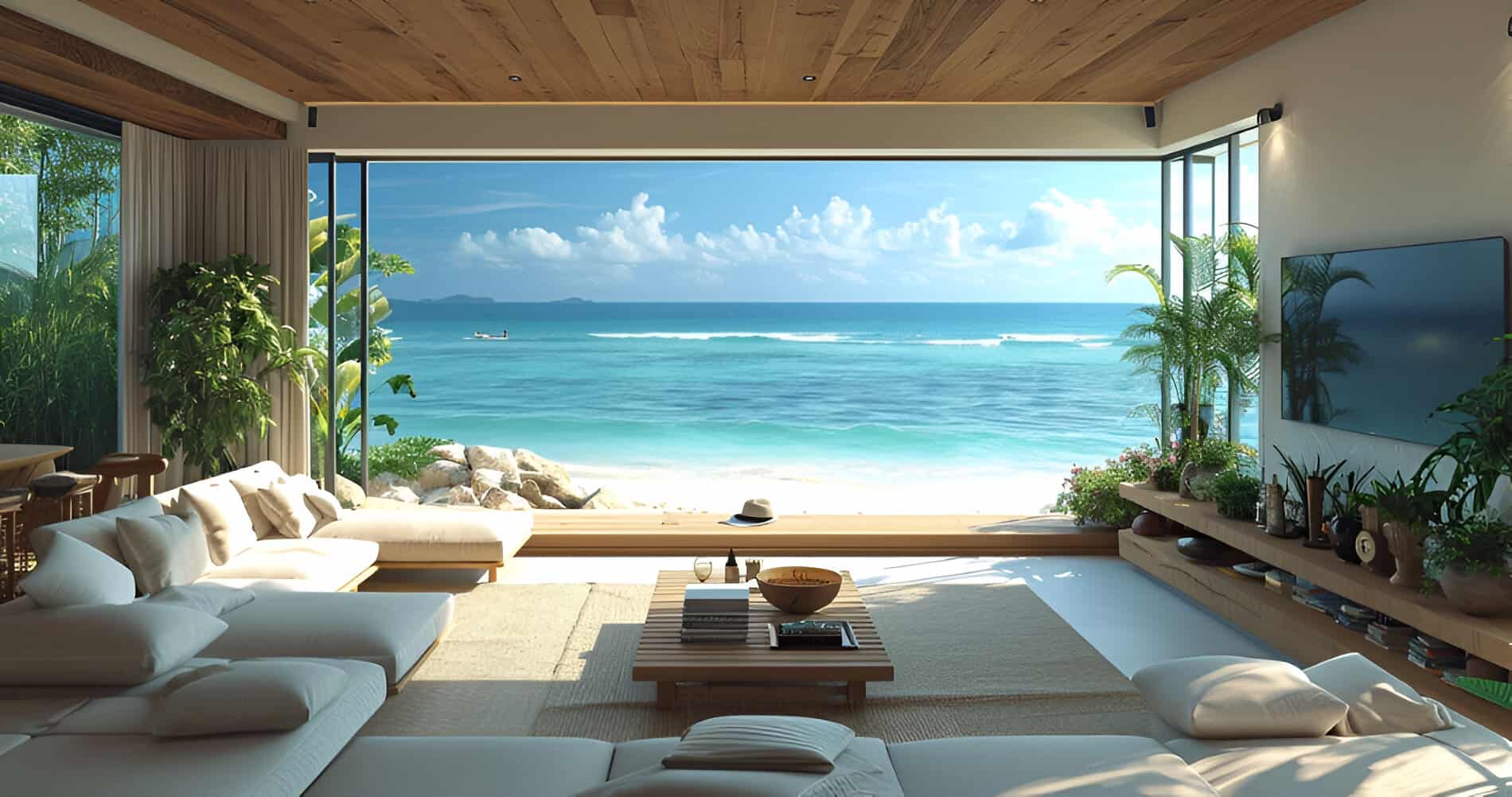Designing a home for a coastal region requires thoughtful consideration of both aesthetics and functionality. The unique environmental challenges and scenic beauty of coastal areas offer an opportunity to create a harmonious blend of nature and architecture.

Key Considerations for Coastal Home Design
Resilience to Weather Conditions
Coastal areas are often subject to extreme weather conditions, including high winds, salty air, and potential flooding. Using durable, weather-resistant materials is crucial. Materials like stainless steel, treated wood, and marine-grade aluminum can withstand the corrosive effects of saltwater. Incorporating impact-resistant windows and reinforced roofing ensures the home remains secure during storms.
Elevation and Flood Protection
Raising the house on stilts or pilings is a common practice in coastal architecture. This elevation protects against flooding and storm surges. Elevated homes not only safeguard against water damage but also provide a better vantage point for enjoying ocean views. Proper drainage systems around the property further mitigate flood risks.
Aesthetic Harmony with the Environment
Coastal Color Palette
Opt for a color palette that reflects the natural surroundings. Soft blues, sandy beiges, and crisp whites evoke the beach and ocean. These colors not only enhance the aesthetic appeal but also keep the home cool by reflecting sunlight. Consider using natural, locally-sourced materials like driftwood, stone, and seashells for added authenticity.
Open and Airy Interiors
Designing interiors with an open floor plan maximizes natural light and ventilation. Large windows and sliding glass doors offer panoramic views of the sea while allowing for cross-ventilation. This design reduces reliance on artificial cooling systems. High ceilings and strategically placed skylights further enhance the sense of spaciousness and airiness.
Sustainable and Eco-Friendly Practices
Energy Efficiency
Harnessing renewable energy sources is particularly effective in coastal areas. Solar panels can provide ample energy due to abundant sunlight, while wind turbines take advantage of coastal breezes. Energy-efficient appliances and LED lighting further reduce the home’s carbon footprint.
Water Conservation
Incorporate water-saving fixtures and rainwater harvesting systems. Coastal areas can experience water scarcity, making conservation essential. Low-flow faucets, dual-flush toilets, and drought-resistant landscaping contribute to sustainable water use. Using native plants for landscaping reduces the need for excessive irrigation.
Outdoor Living Spaces
Expansive Decks and Patios
Outdoor living spaces are integral to coastal homes. Expansive decks and patios extend the living area and provide a perfect spot for relaxation and entertaining. Using weather-resistant materials like composite decking ensures longevity. Incorporate built-in seating, outdoor kitchens, and fire pits to enhance functionality.
Landscaping and Vegetation
Choose vegetation that thrives in sandy soil and salty air. Coastal grasses, succulents, and hardy shrubs not only add beauty but also help prevent soil erosion. Planting a mix of trees and bushes provides shade and wind protection, creating a microclimate that enhances comfort.
Interior Design Elements
Nautical Themes and Décor
Incorporate subtle nautical themes to reflect the coastal setting. Elements like ropes, shells, and maritime artifacts can be tastefully integrated into the décor. Use natural fibers for rugs and upholstery to add texture and warmth. Lightweight, sheer curtains allow for privacy without obstructing views or airflow.
Multi-Functional Furniture
Space-saving, multi-functional furniture is ideal for maximizing interior space. Consider built-in storage solutions, foldable furniture, and modular pieces that can adapt to different needs. This approach ensures the home remains clutter-free and spacious.
Conclusion
Designing a home for coastal areas is a balancing act between aesthetics, functionality, and sustainability. By prioritizing weather resilience, eco-friendly practices, and harmonious integration with the natural environment, one can create a serene and durable coastal abode. Thoughtful design choices, from the color palette to the selection of materials, play a pivotal role in crafting a home that not only withstands the elements but also celebrates the unique charm of coastal living.